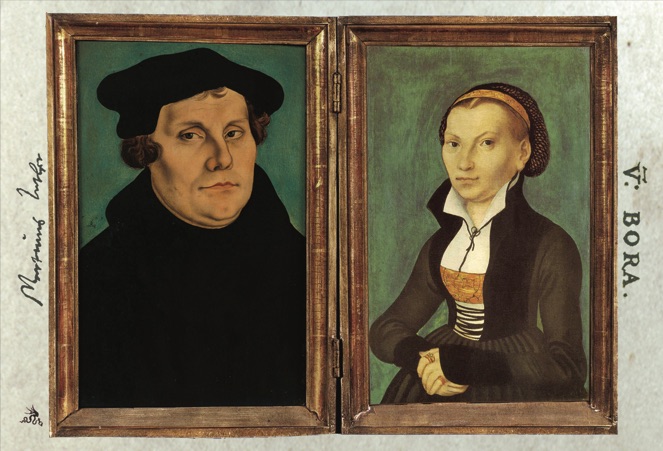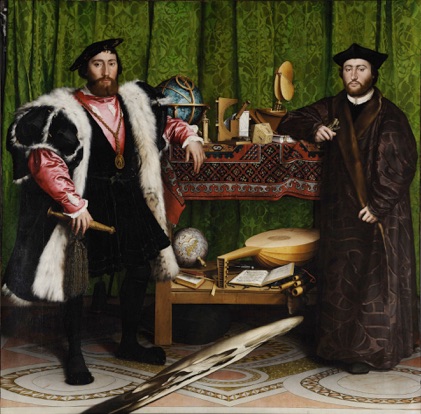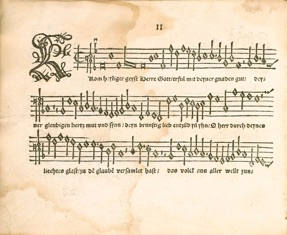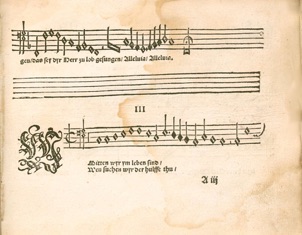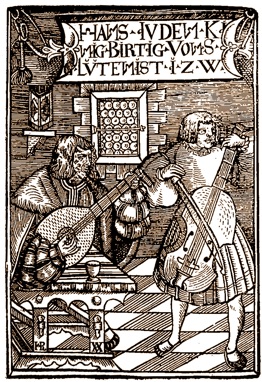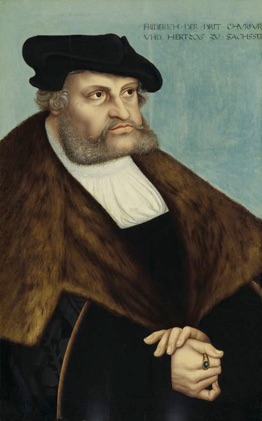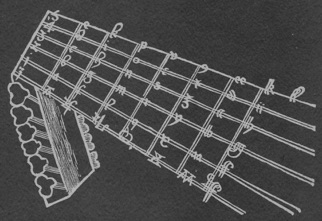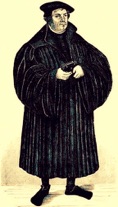


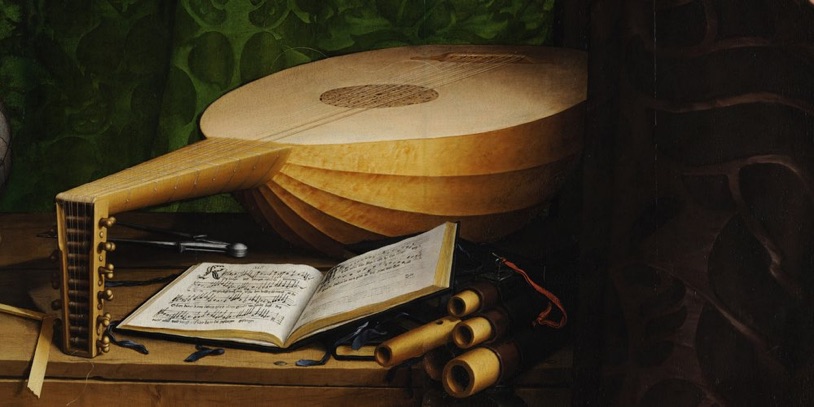
500 years Reformation project 2017 - Luther as a Musician - Movie presentation 31 October 2017 - Concert
Complete recording material August 2016 Wittenberg - Melanchtonhaus - Lucas Cranach Höfe - Kirche Löben & Sylbitz Germany
Katharina von Bora - Paula Bär - Giese soprano & portative
Luther - Hans Meijer lute
Johann Walter - Hein Hof organ & virginal
Mein Herz hat allzeit verlangen - Pierre da la Rue (1450-1518) - Hans Judenkünig
Katharina von Bora - soprano
Luther - lute
Mein Herz hat allzeit verlangen nach dir du allerliebster, allerliebster mein.
Die Liebe hat mich befangen.
Ganz dir zu eigen nur will ich sein.
Vor all der Welt gemeine hast du mein Herz ganz alleine.
Darum schöns Lieb, ach verlaß mich nicht, verlaß mich nicht, verlaß mich nicht.
Music and Martin Luther
As with most music students of his time, Luther had a grounding in both singing and the lute and was recognized as a skilled lute-player with a pleasant tenor voice.
For Luther, music was not a ‘dark art’ but one which he grasped as well as any other educated person of his time. He enjoyed singing and playing his lute at home.
Luther’s detailed knowledge of polyphonic works may well have links with his proficiency on the lute. A substantial portion of the pieces found in German tabulations of the period, both in manuscript and published, are drawn from vocal models.
There are lute tabulations of vocal polyphony by such composers as: de la Rue, Schlick, Isaac, Hofhaimer, Josquin, Senfl, Ducis, Stolzer and others.
There is therefore the possibility that Luther played such lute transcriptions as well as singing the vocal polyphony with his family, friends and colleagues.
Martin Luther & Josquin des Prez
Luther - Vom Himmel hoch, da komm ich her
After his death, as his body was being transported back to Wittenberg from Eisleben where he was died, the people in Halle appropriately marked his passing by singing one of the hymns he created: Aus tiefer Not schrei ich zu dir.
Walter - Luther compositions: Ach Gott von Himmel - Christ lag ynn todes banden
KATHARINA VON BORA
With or without her husband, Katharina was a woman of faith, stature, and conviction that often moved her to action. Katharina was born into a poor but noble family in the German state of Saxony. When her mother died, little “Katie,” at around five years old, was sent to a Benedictine convent school near Halle. At age ten she was transferred to a Cistercian nunnery in Nimbschen, and in 1515, at the young age of 16, was consecrated as a nun.
Katharina lived as a nun for the following eight years, but as an intelligent woman and deep thinker, she could not ignore the news of Dr. Martin Luther and his campaign to reform the wayward teaching and practises of the Church.
“When Katherine was seventeen, Dr. Luther had come as near to their convent as Grimma, six miles away, and reports of his sermons in that church seeped into the convent. One of the nuns was Magdalene von Staupitz, niece of the vicar-general of the Augustinians, the man who gave Luther his first Bible with the words, “Let the study of the Scriptures be your occupation.” From this had stemmed Luther’s conversion and devotion to the Bible. Magdalene had received some of Luther’s writings and had eagerly imbibed the Reformed doctrines. She gradually and secretly drew as many as eight other nuns to her way of thinking. Katherine was one of them. Over their endless embroidery, patient distilling of herbs, and so on, they contrived to whisper together, and were alert to every bit of ecclesiastical news from the outside world.”
The escape of Katharina and eleven other nuns on Holy Saturday in 1523 is an exciting story and only the beginning of many courageous decisions and actions she would need to take during her life as the wife and widow of Dr. Luther. Katharina arrived in Wittenberg after the escape, she was taken in by the family of Lucas Cranach.
At his death Luther had been receiving a pension annuity from King Christian III of Denmark. King Christian III continued the pension after Luther’s death, making the payments to Katie. When the pension stopped coming in 1548, two of Luther’s colleagues sought to get the pension restored, to no effect. Katie took up the cause in letters to King Christian III in 1550 and 1552, to which the king finally assented. Katie was clearly a force to be reckoned with, a bit like the New Testament’s persistent widow.
HANS HOLBEIN 1533 - Painter at the Court of Henry VIII - THE AMBASSADORS
On the lower table, you can see an 11-stringed lute and an open book of music. But notice the broken string: this is commonly regarded as evoking ecclesiastical disharmony during the Reformation. Would things be improved simply if the reformers returned to the fold? Is this more Catholic propaganda? Well, the fascinating thing is that the book is in fact a Lutheran hymnal and the hymn is Luther’s own composition KOM HEYLIGER GEYST
The Stichting Musick’s Monument produces Historical Art Productions. Pictures, music and text are integrated: You will hear music from the same period and the same area of origin as the visual materials; these are supplemented with explanatory text. From this combination evolves something like a Gesamtkunstwerk (a total work of art), a complete new way of digital art presentation .
INFO STICHTING MUSICK’S MONUMENT
